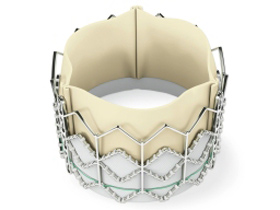Doctors at University of California, Los Angeles Health System have performed their first transcatheter aortic valve replacement (TAVR), using a new device to replace an aortic valve in a patient who was not a candidate for open-heart surgery.
The device has been approved by the US Food and Drug Administration.
Aortic valve may be damaged by aortic stenosis, a condition which causes narrowing of the heart's aortic valve caused by calcium deposits, which impedes blood flow, causing the heart to work harder to pump blood to the body and placing patients at higher risk of heart failure or death.
Many patients are not good candidates for conventional valve replacement because they suffer from a number of other health issues, and it is estimated that 40 per cent of patients do not undergo aortic valve replacement because they are considered inoperable.
The TAVR allows doctors for the first time to replace the aortic valve without either of these components of conventional surgery.
The aortic valve's leaflets act as sentries to help blood flow from the heart into the aorta while preventing blood from leaking backward into the heart.
When the leaflets aren't doing their job properly due to aortic stenosis, the heart needs to generate higher pressure to push the blood through the valve into the aorta.
The new device is deployed through a catheter- a long tube that is advanced through an artery in the groin up to the heart. Once in place, a balloon at the end of the catheter is inflated, opening the new valve, which starts working instantly.
"The new valve procedure offers hope to patients who previously had few options," Dr Jonathan Tobis, a clinical professor of cardiology at UCLA said.
"The initial roll-out will include patients who are not candidates for open surgery. The FDA is considering this procedure for high-risk patients who are also surgical candidates, so we look forward to offering TAVR to even more patients in the near future," Tobis said in a statement.
A recent randomised clinical study showed a significantly higher one-year survival rate among patients treated with the new valve, compared with those who received medical therapy.
"We expect to see substantial quality-of-life gains from this new procedure," said Dr Richard J Shemin, chief of cardiothoracic surgery at UCLA Health System.
Agency











